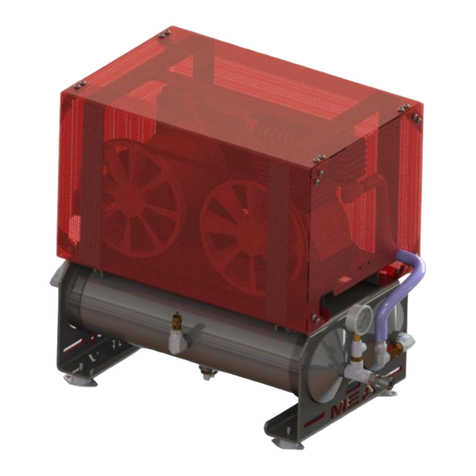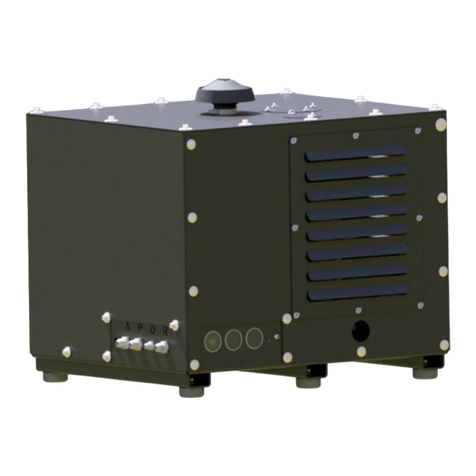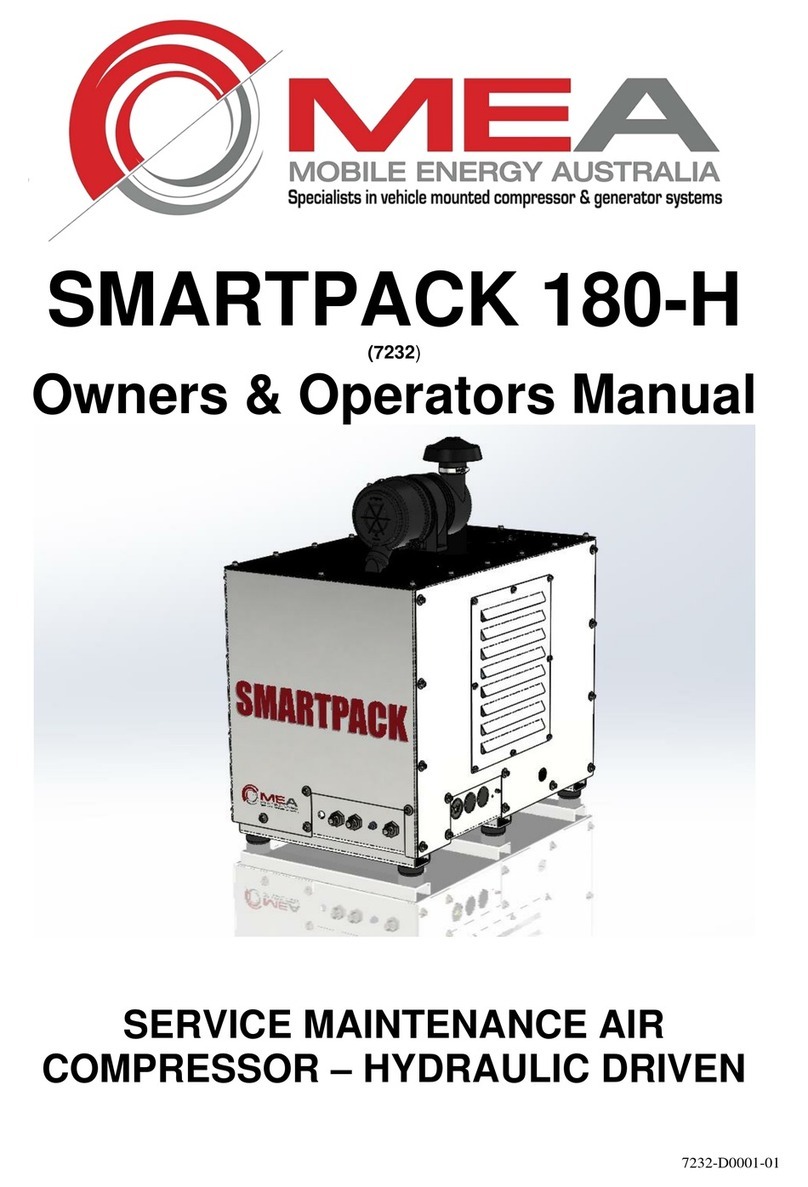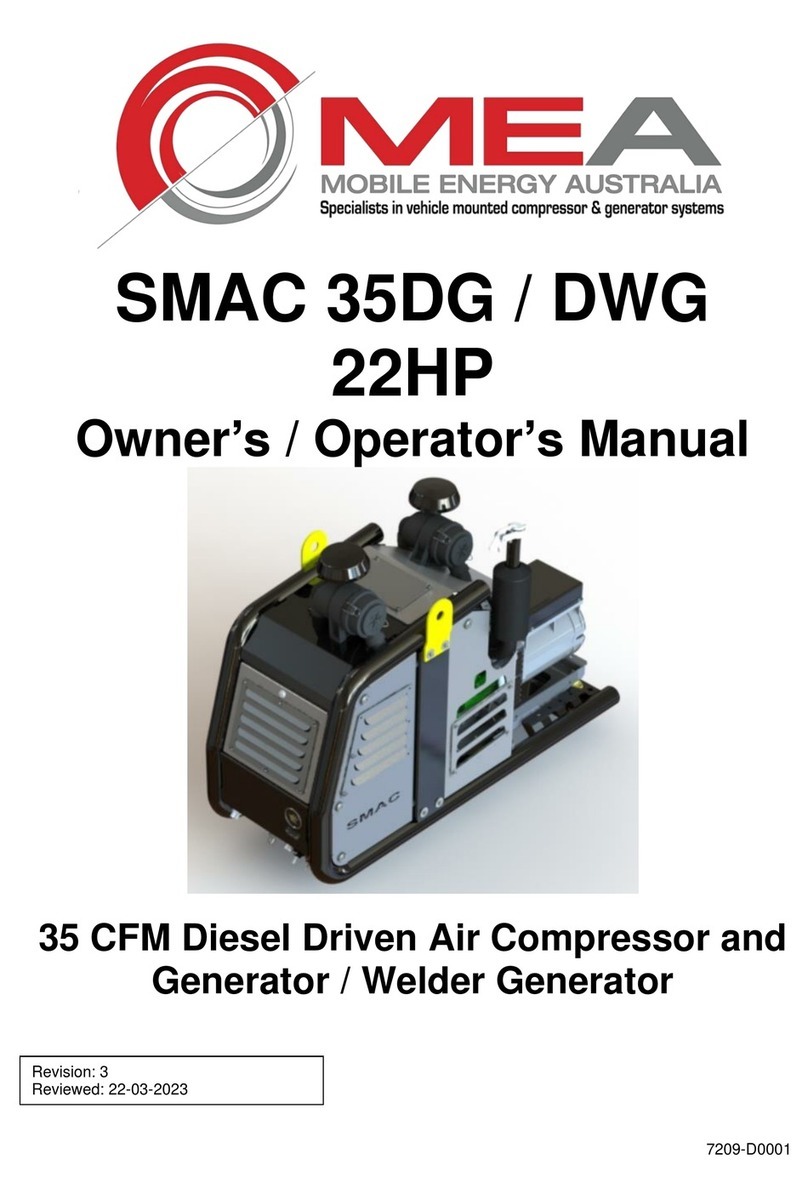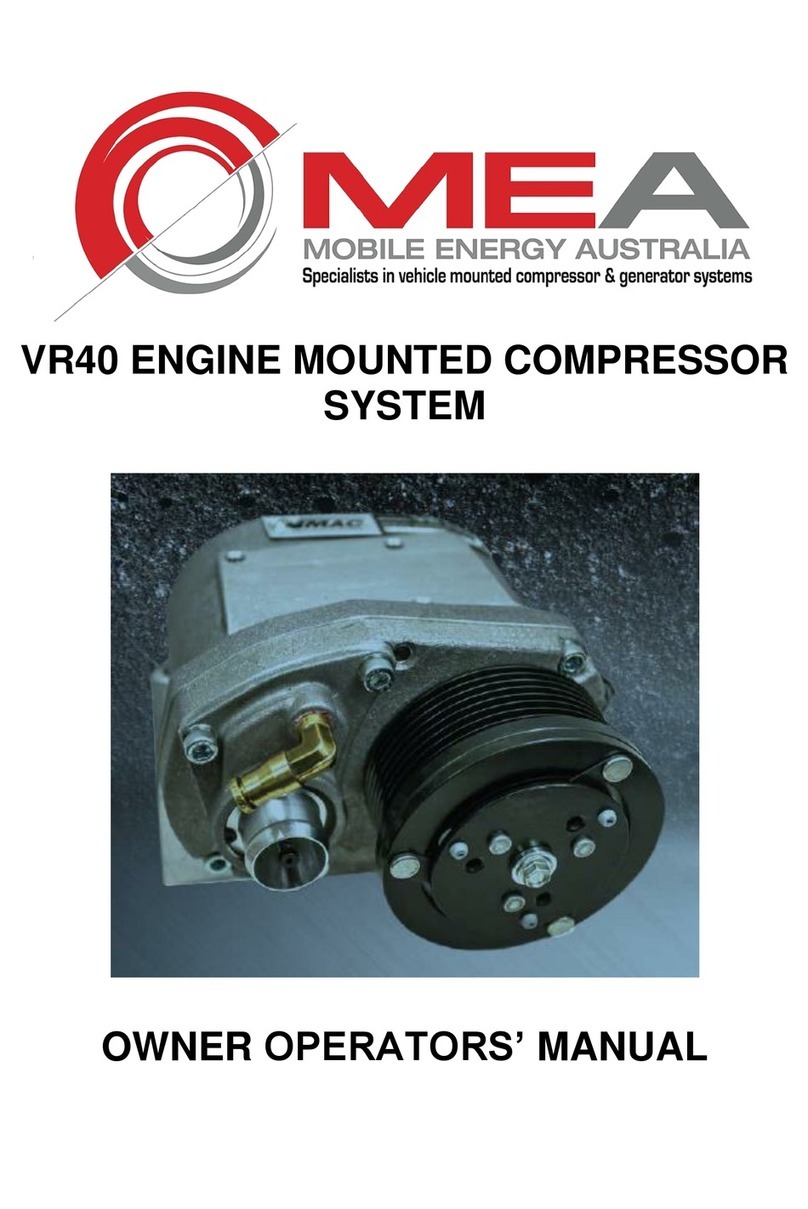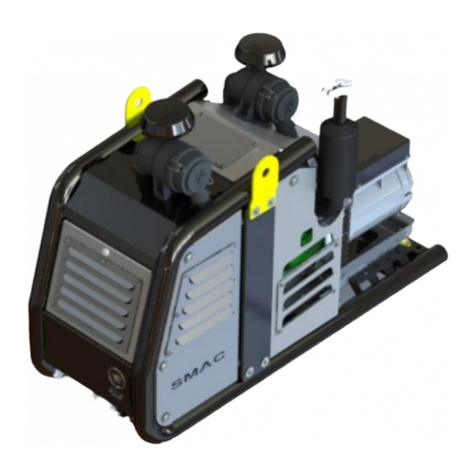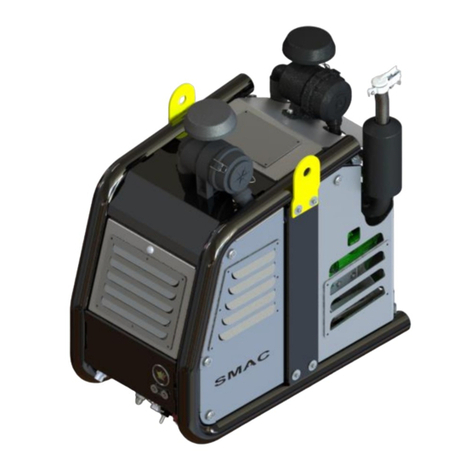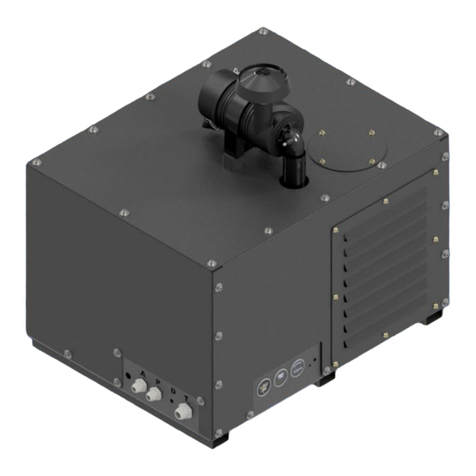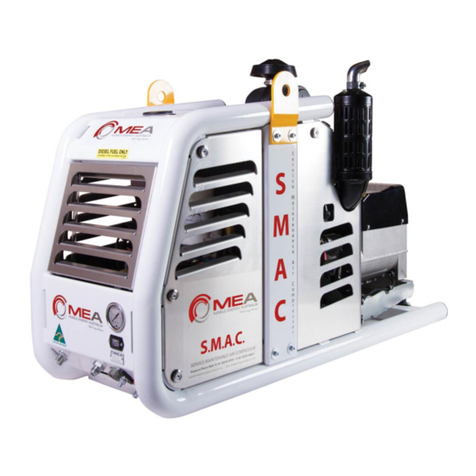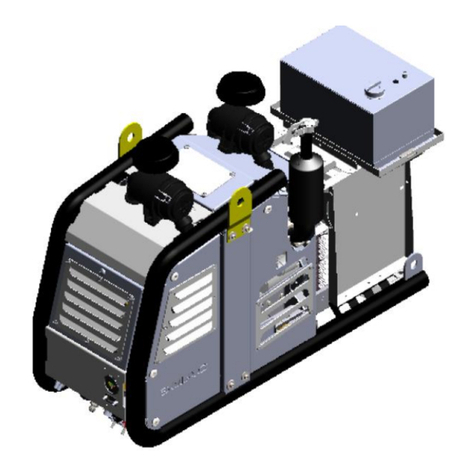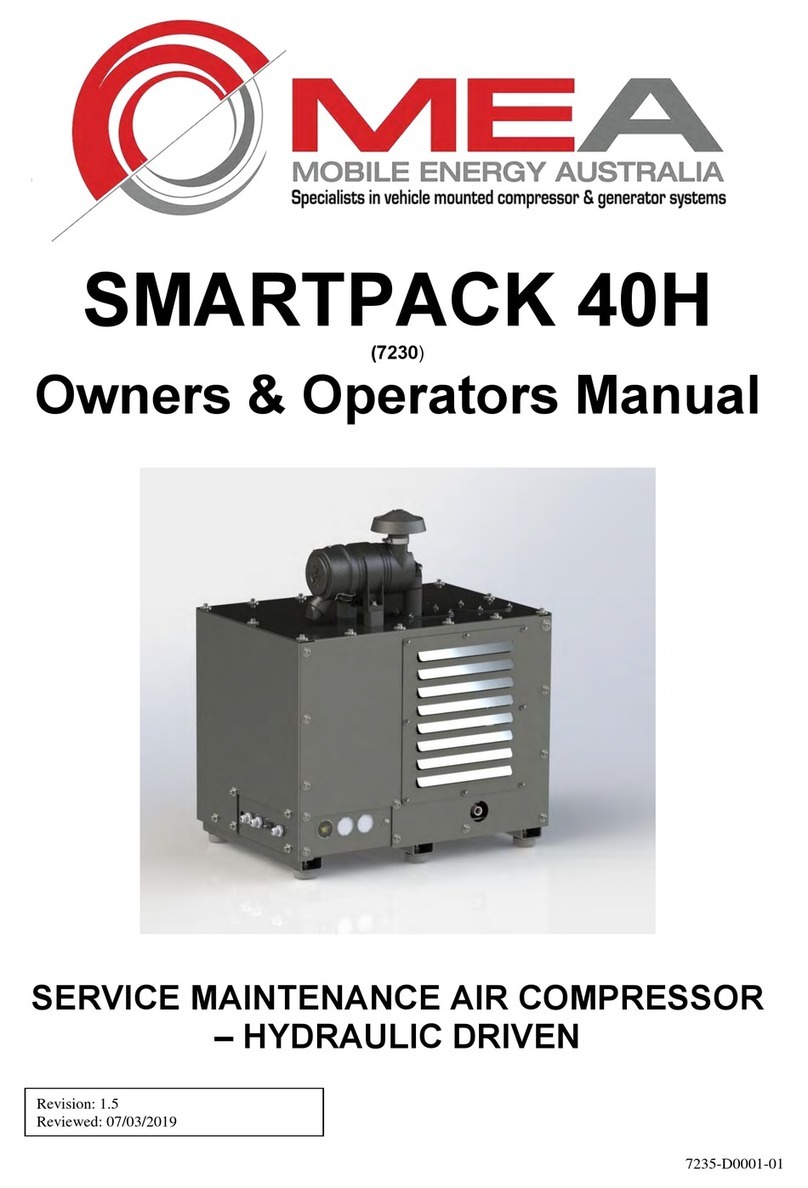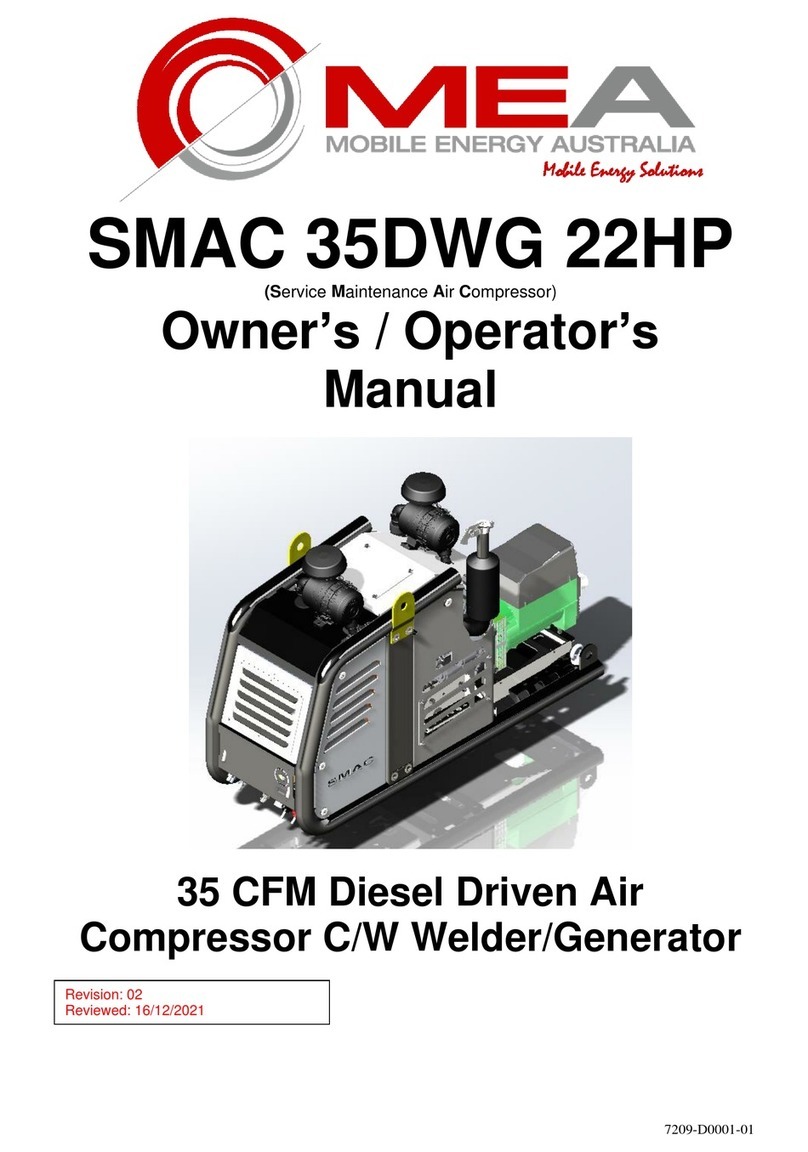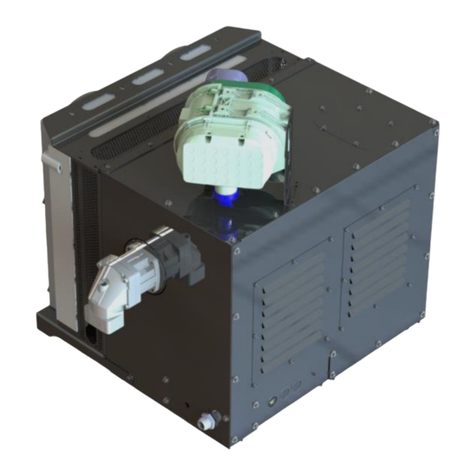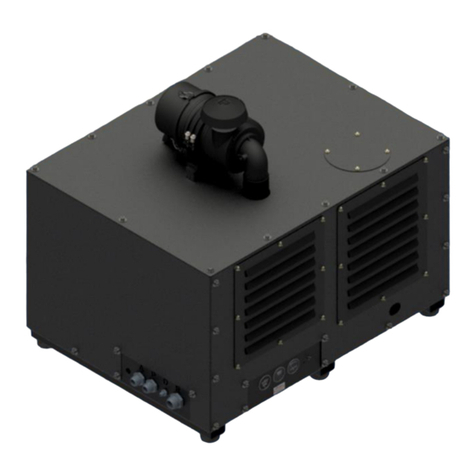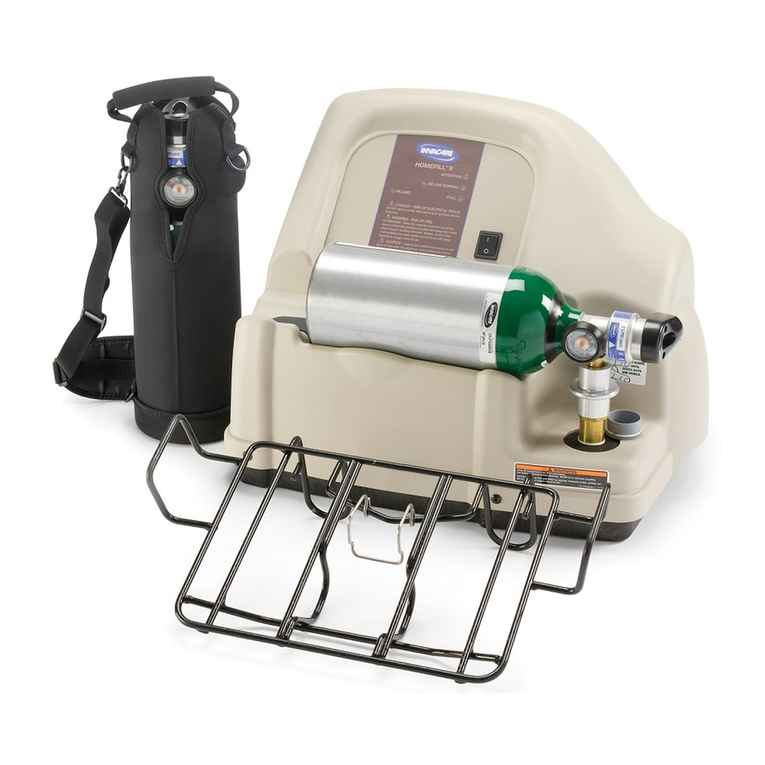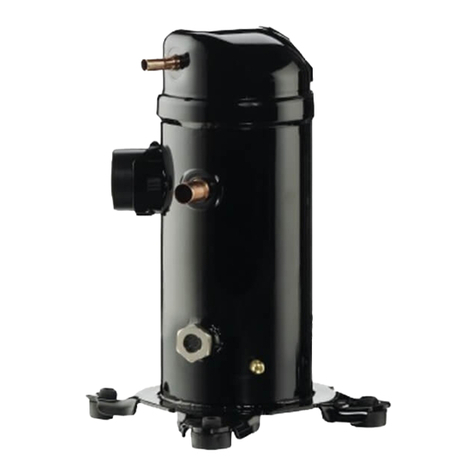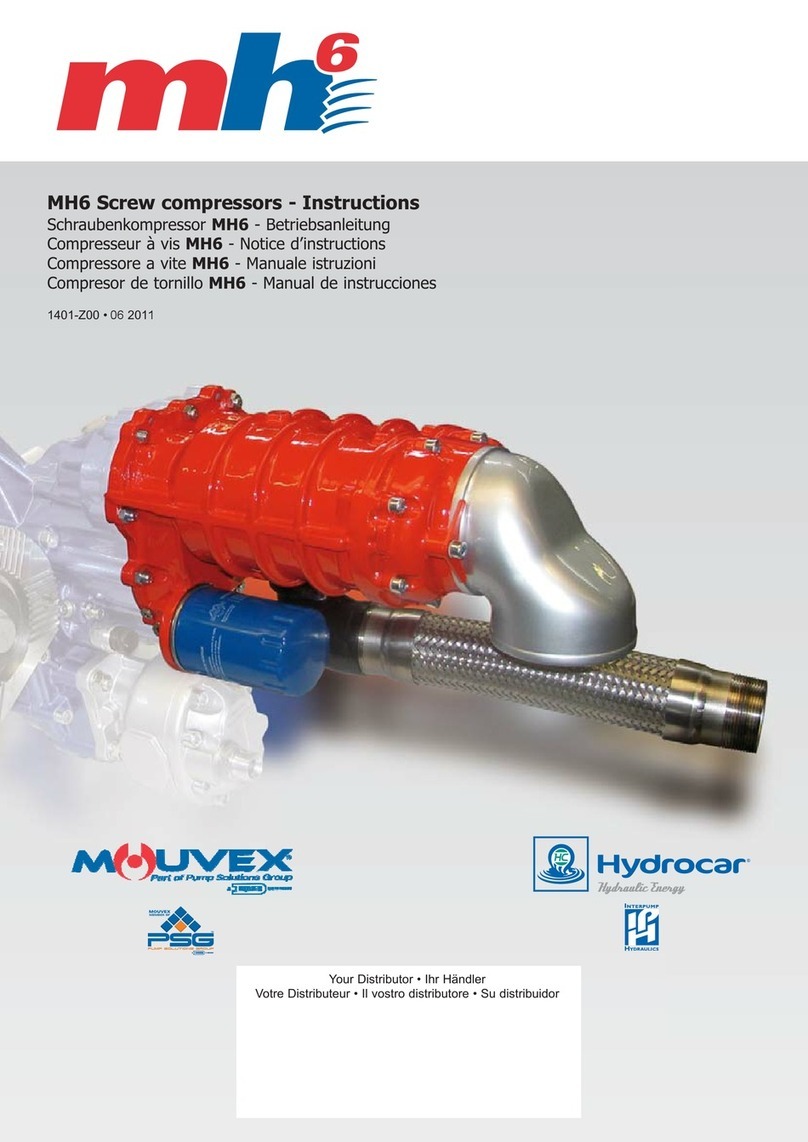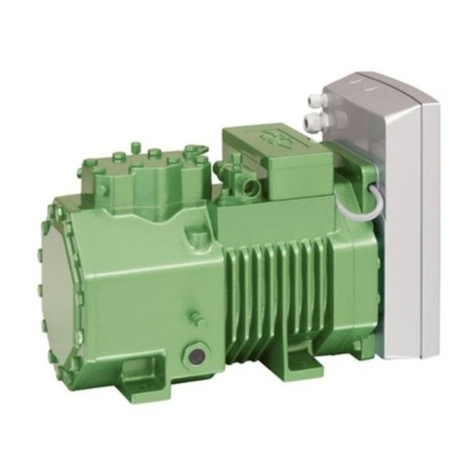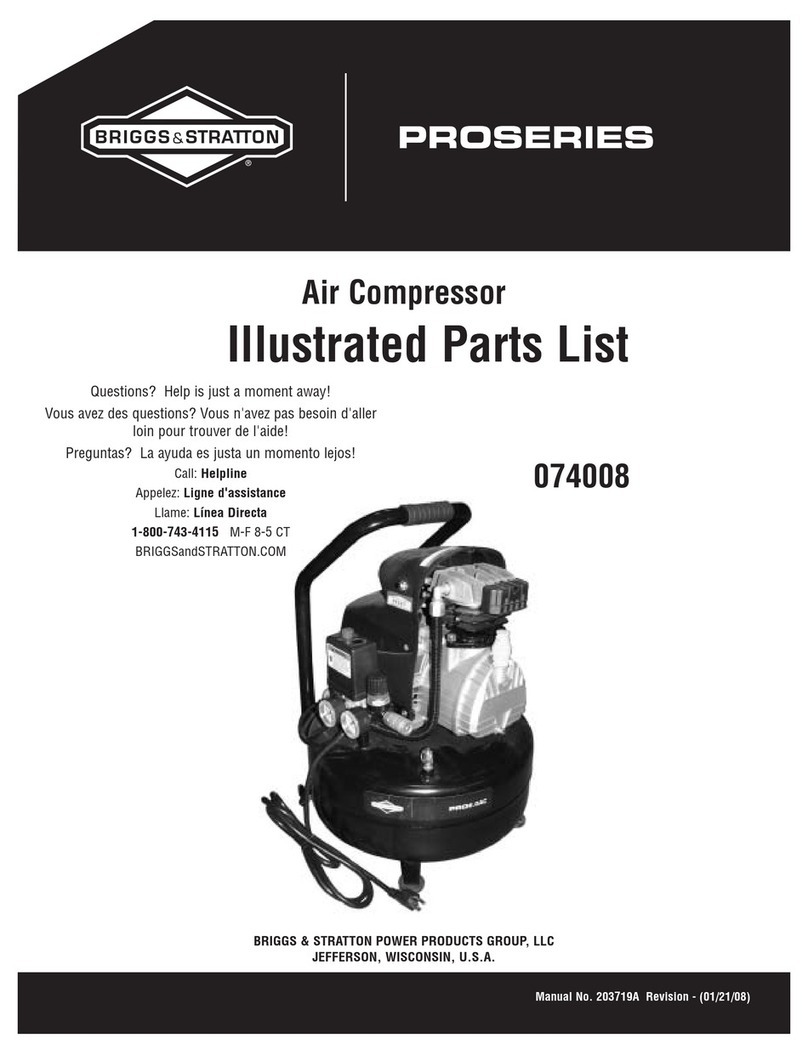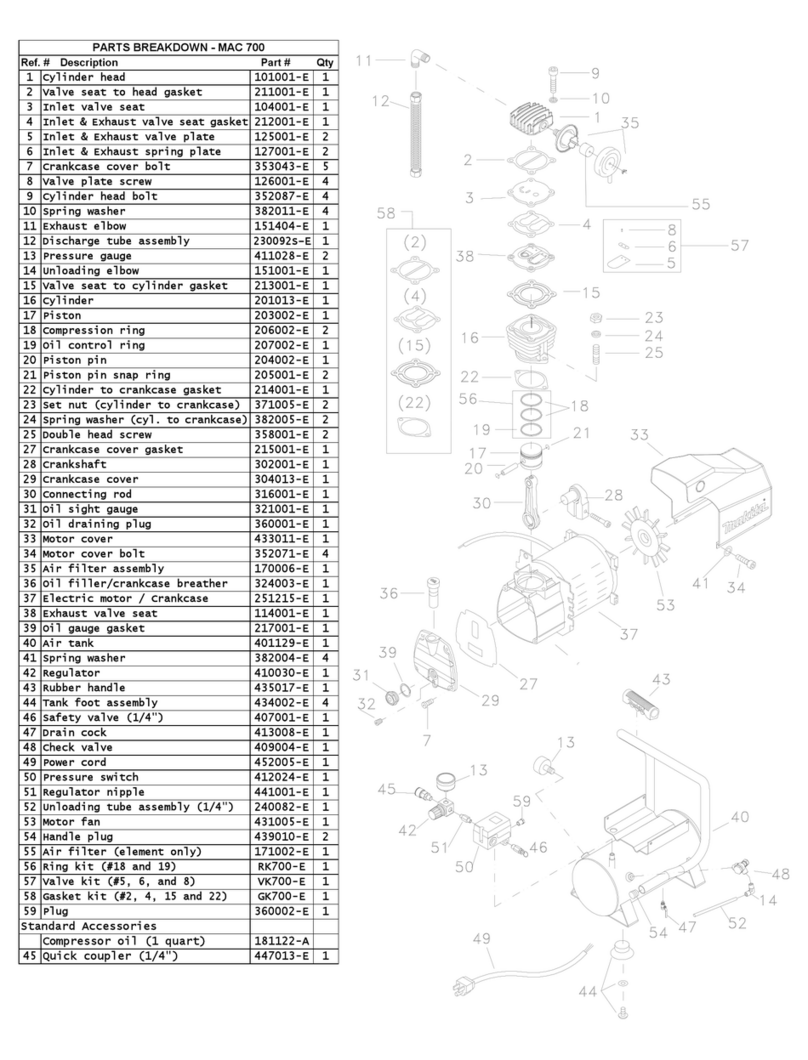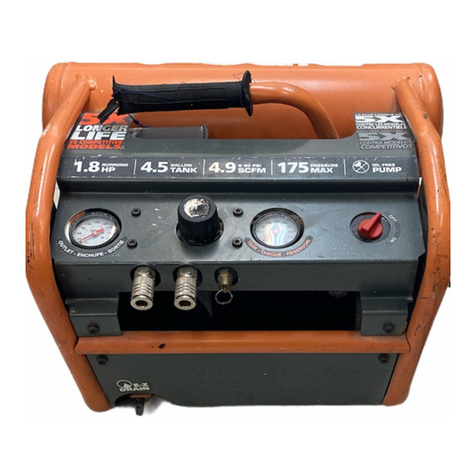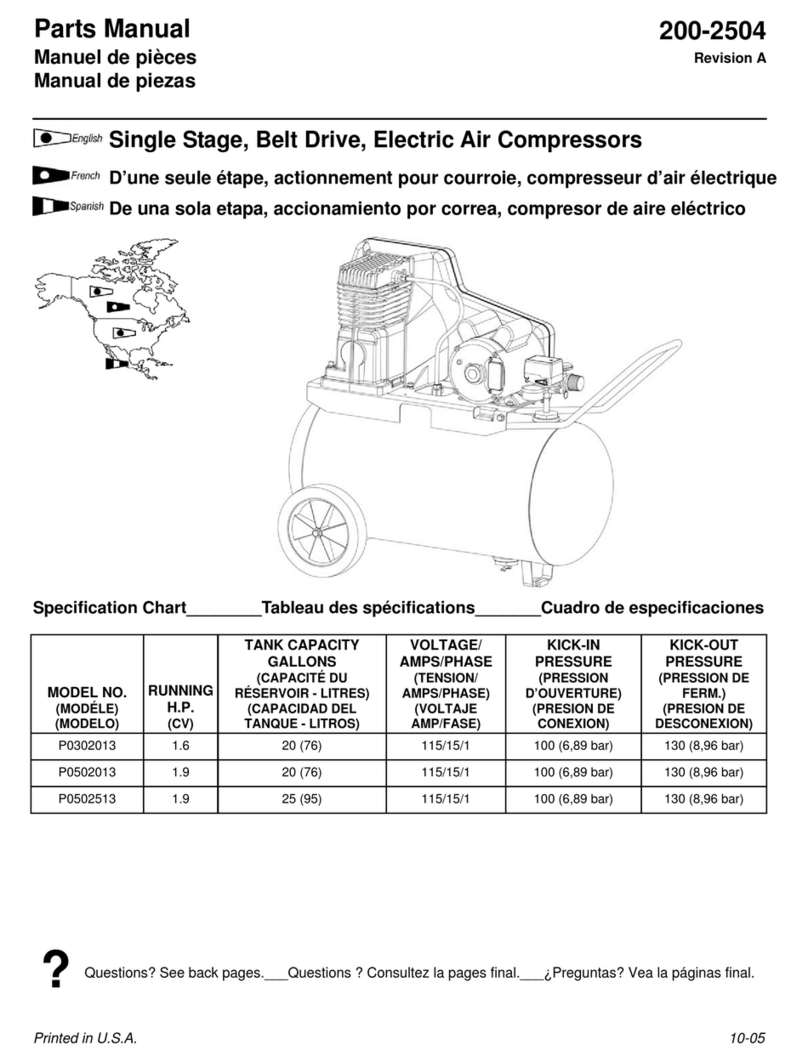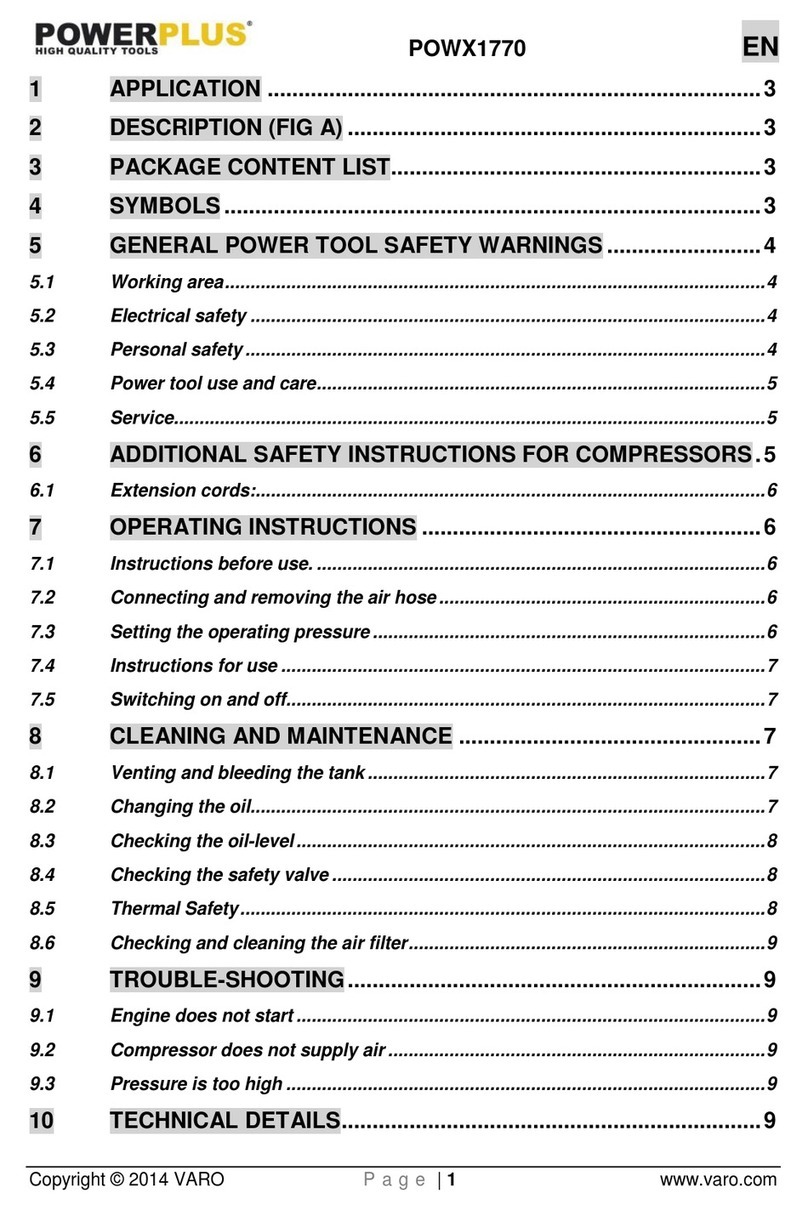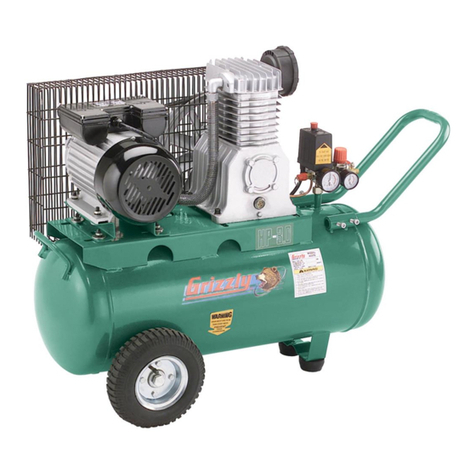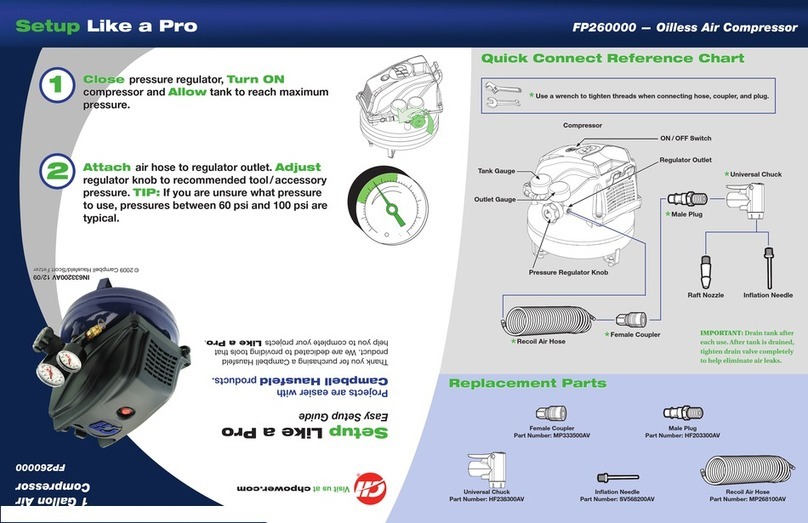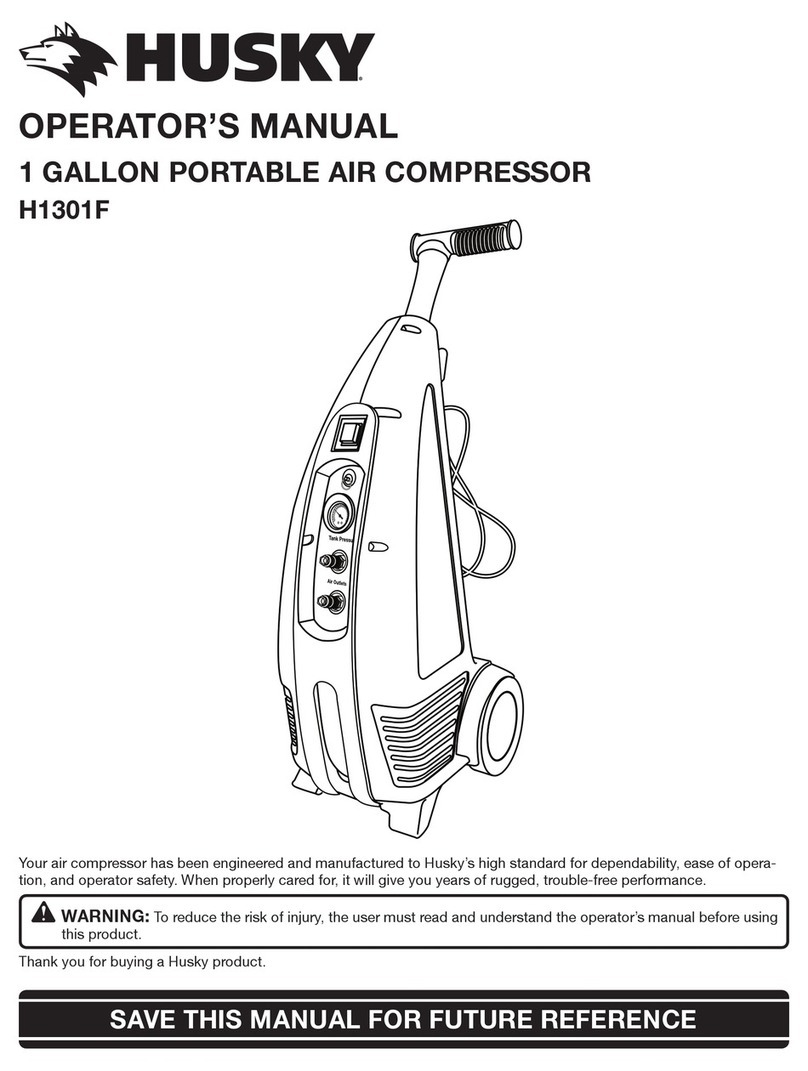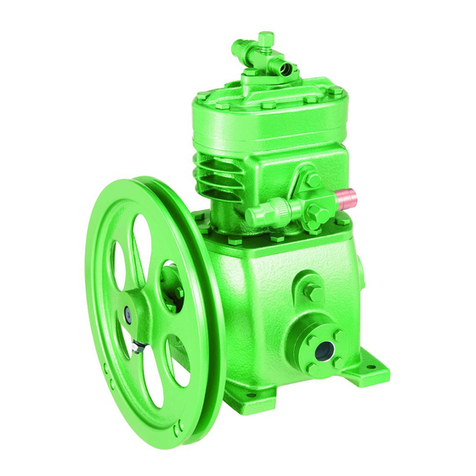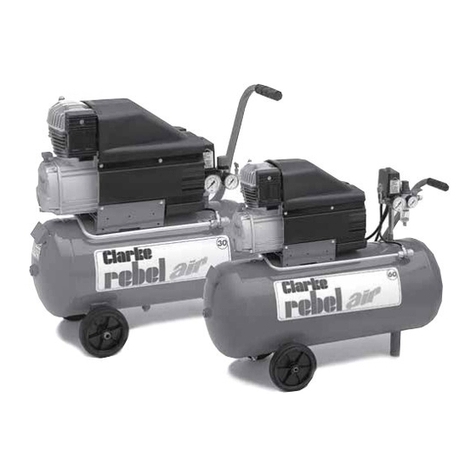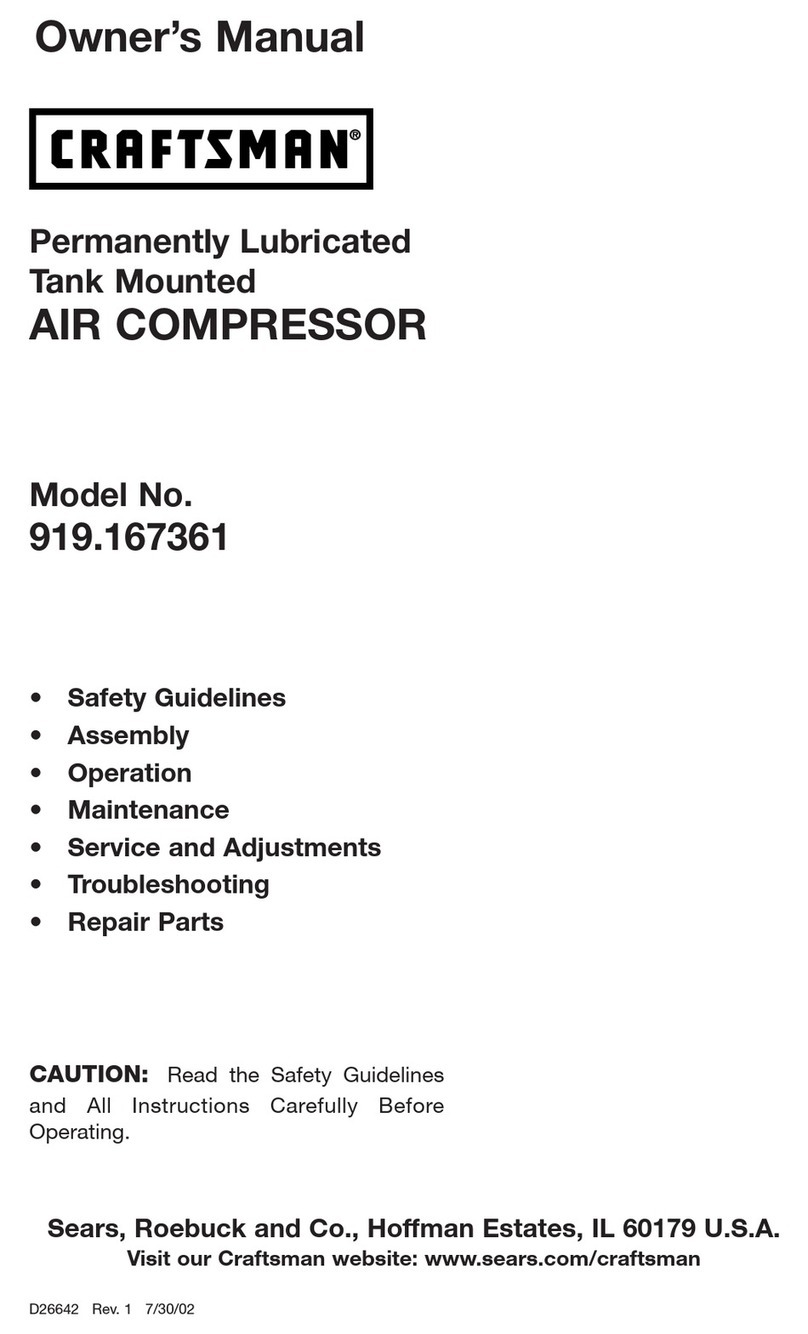
Document No 7202-D0001-11 2
COMPRESSOR / COMPRESSED AIR SAFETY
MEA DISCLAIMS ANY AND ALL LIABILITIES FOR DAMAGE OR LOSS DUE TO PERSONAL INJURIES,
INCLUDING DEATH, AND/OR PROPERTY DAMAGE INCLUDING CONSEQUENTIAL DAMAGES
ARISING OUT OF ANY MEA COMPRESSOR SYSTEM NOT USED IN ACCORDANCE WITH THE
OPERATOR INSTRUCTIONS.
ALL UNITS ARE SHIPPED WITH A DETAILED OPERATOR MANUAL. THIS MANUAL CONTAINS VITAL
INFORMATION FOR THE SAFE USE AND EFFICIENT OPERATION OF THIS UNIT. CAREFULLY READ
THE OPERATORS MANUAL BEFORE STARTING THE UNIT. FAILURE TO ADHERE TO THE
INSTRUCTIONS COULD RESULT IN SERIOUS BODILY INJURY OR PROPERTY DAMAGE.
Care is required when working with an air compressor or compressed air. Compressed air is one of the many
ways energy can be stored. Releasing the stored energy in an uncontrolled manner can result in catastrophic
consequences. Death and permanent disability are all possibilities that can occur. The following are
suggested as minimum precautions to be used when operating the SMAC Air Compressor. It is important that
each work site engages in a risk analysis of that site and produces procedures in order to minimise injury to
their employees. Health and Safety Regulations today require that this is a compulsory process to be carried
out on each site. These, with site specific designed safety precautions will help to reduce accidents, personal
injury and loss of life. It is the responsibility of the employer to ensure that the work site is safe for the
employees.
SAFETY WHEN OPERATING AN AIR COMPRESSOR
Do not bypass or disable the oil temperature sensor.
Do not expose the tank or compressor to extreme heat.
Do not perform any service or repairs until the system has been completely relieved of air pressure.
Maintenance and repairs on the system should only be done by qualified personnel.
Do not operate the compressor while driving.
Do not tamper with the pressure relief valve.
Run the system at idle speed and under no load conditions for 2 to 3 minutes before turning the system off to
allow system cooling and lubrication to occur.
Follow safe work practices, wear the appropriate safety equipment when operating air-powered equipment,
particularly eye and hearing protection.
Avoid contact with rotating components, ensure all safety guards are in place.
Avoid all contact with pressurized air. If it penetrates you’re skin, it can enter your blood stream and cause
death.
To prevent compressor explosion or fire, make sure that the air entering the compressor is free of flammable
vapors.
Vaporized oil propelled by high pressure is an explosive mixture.
Do not breathe the compressor air, vaporized oil is a respiratory hazard.
Stay clear of all moving parts when the system is operating.
Follow safety procedures for tyre service operations as set by the authority.




















